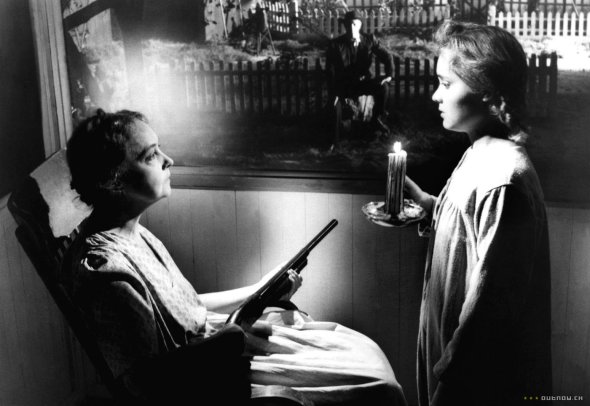American Gothic #6: American Gothic Culture
There are questions and implications that I have left dangling during this survey of various aspects of American Gothic Culture. And undoubtedly I have left a few confusions uncovered. Since this has been essentially an introduction to a subject that doesn’t really seem to have been dealt with before I’m well aware of how many other examples I could pull from a hat. There many discussions left to be had about what is and isn’t American Gothic Culture. There is also a fairly serious delineation to be made between this nascent American Gothic sensibility and what is often called Goth. I will attempt a little of that now.
One question that has been left unexplored is this: Why did American Gothic Music take so long to come into being? The short answer goes like this. Music has always been a part of that which links people together. Thus there has often been an underlying sense of confidence that often pervades the music. Music often has a joyful component to it. Or at least a simulacrum of joy as in the sterile ‘fun’ of so much pop music. Even the blues, as painful as they can be, often has an aspect of hope buried in the implications: The idea that “the sun will shine on my back door someday”. Or even the notion that by hearing the pain of these lyrics someone will change somehow.
As a result music hasn’t been the best vessel for expressing real darkness… until fairly recently. After years of exploring various musical phenomena I think I can fairly confidently state that it wasn’t until the 1960’s that a certain kind of philosophical darkness entered popular music with groups like Love and The Doors. This existential dread festered into real anomie with Iggy and the Stooges. (It is curious to note that all of these bands were on Elektra Records.) And finally the music erupted into explicit rage with the Sex Pistols in 1976. And this rage was new. I don’t just mean it was a new musical trend. I mean in all of the history of music there was absolutely no precedent for such blood curdling scabrous anguish as to be found in, say, The Birthday Party’s Fears of Gun where Nick Cave vomits out the word ‘Love’ as if being disemboweled. You can search all you want, I have, for anything that sounds remotely that angry… you will never find it, prior to that point in human history.
It takes that sort of bleak intensity to comprehend the American Gothic vision. And it is not Nick Cave’s spewing forth that is his American Gothic work. It came when he started to try to find answers for the questions he had posed about the nature of humanity. And this is one reason why American Gothic Culture is vastly different than the usual Euro-Goth scene. Goth is about the darkness. Goth is about vampires, funerary motifs, ghosts. It finds these images to be helpful as some sort of anodyne to the blandness of contemporary culture. Goth also dips into fetishes quite liberally; leather, rubber, corsets, etc. Goth Culture seems to say I am the darkness. I want to be a vampire. I want to be as spectral as a ghost. I want to be cool. Don’t dream it, be it.
American Gothic Culture seems quite Other, by comparison. Even the darkest of the dark within the American Gothic spectrum, for instance Ambrose Bierce or Joe Coleman seem to have other fish to fry. Instead of being cool, their work seems to scream, “Why is it so dark? Huh!” Tobe Hooper’s original Texas Chain Saw Massacre is a fever pitched cry of black despair fuelled more by cosmic anger at the insanity surrounding him than by any desire to laugh at the rubes. Even the extremely sardonic and gory humor of EC Comics can be seen as a series of serious questions. The man who pulls the face off of an ugly woman with a hot body trying to get her to unmask says more about the mysteries and problems of beauty in this dark world than has ever been written in a fashion magazine.
In fact the hallmark of real American Gothic work is a recognition of the evil, the bleakness, the absurdity, the darkness of the human condition. And that’s the answer to another implication: Why don’t folks with an American Gothic perspective sell out to the commercial forces the way Hippies, Beats, Punks, Rappers, etc ad nauseum seem to do? It’s because there is no point in becoming huge. There is no progressive utopian Romantic goal to achieve. The end is already seen in the beginning. That doesn’t mean that Tom Waits, Cormac McCarthy or other successful American Gothic folks aren’t happy to be selling a few books and discs. But the truth is they aren’t driven by commercial imperatives. If they didn’t sell a thing their viewpoint wouldn’t really change.
Fascinatingly American Gothic Culture houses both Christians and Atheists quite comfortably. But by Christians I don’t mean the contemporary commercial mega-church consumers. I mean folks like Johnny Cash, Flannery O’Connor, David Eugene Edwards. Nick Cave has been seemingly close to Christian faith at times. And by atheists I don’t mean the Richard Dawkins variety of confident hucksters, I mean the bleaker, more honest souls like an Ambrose Bierce or H.P. Lovecraft. And it was Lovecraft who admired the Puritans for their darkness.

In Night of the Hunter Devout Unromantic Christian Lillian Gish Plays a Woman Not Conned by the Imitation
But the point is this: These aren’t the gullible folks. These folks don’t seem to have nice positive attitudes. They aren’t trying to boost anyone’s self-esteem. They aren’t Romantic in any sense of the word. (Another big difference with Goth Culture.) There is no collusion between Disney and American Goth. There is no cute version of American Gothic Culture. And most interestingly American Gothic sensibility is in no way Postmodern.
Postmodern Culture thrives on postmodern irony. It lives on the deconstruction of Marilyn Monroe into Madonna into Lady Gaga. It lives on surfaces, since surfaces are deemed to be the only reality. It takes style as substance, content as merely social conditioning. It laughs at seriousness as pretension. The old Modernism was way too serious, though in disassembling everything they paved the way for the ironic hordes. Who to say that Beverly Hills 90210 isn’t as good as James Joyce?
American Gothic trumps postmodern irony with bitter irony. And bitter irony is fairly impervious to deconstruction. Who can deconstruct the Texas Chain Saw Massacre? I don’t mean you can’t make fun of it. Sure you can. But you have to get into the dark EC Comics mode to do it. But I mean put the DVD into your machine tonight. See who wins? Leatherface or postmodern irony? There is no contest. Your most postmodern child will wither before such an onslaught. Why? Because although there is humor to be found there, ultimately this thing is too damned serious to be turned into a deconstruction of itself. Tobe Hooper really believed in the power of the chainsaw. The same goes for The Road (film or book), Winter’s Bone (ditto), Nick Cave wailing Saint Huck or Tom Waits who uses humor all the time, yet really can’t be touched be postmodern irony.
The reason that academic theoretical babble about appropriation or deconstruction don’t get to far down the American Gothic road is because instead of ironic appropriation you have junkyard salvage, instead of deconstruction, you are faced with a much older stronger concept: destruction. American Gothic Culture is entropic. It sees the limits of a culture, our own, that is based upon endless progress and positive vibes. American Gothic Culture sees the good effects of negativity: The meaning behind the word No.
This isn’t to say that every artist I’ve mentioned was consciously saying No to the mindless optimism of the larger culture. But I do believe a good many of them have. There is a sense of realism in the face of the endless facades. American Gothic Culture is not an active movement. There is no town I could recommend for you to hang out in for American Goth trappings. There is intelligence, sorrow, black humor, history and even sometimes deeper strands of questioning and faith to be found in American Gothic outlook. At it’s best the American Gothic sensibility is a lot like the character of Ree in Winter’s Bone or even Atticus Finch in To Kill a Mockingbird. It is grit and integrity in the face of the American nightmare, which it projects as the growing dimming entropic reality of the American future.
We’ll leave this introduction to American Gothic Culture here. But it is obviously one form of Anadromous Life being birthed in our times, one culture going against the stream of endless propaganda and the hype, a real question mark in the face the growing fiction of the 21st Century.
Byrne Power
Haines, Alaska
7/25/11











